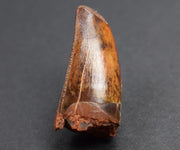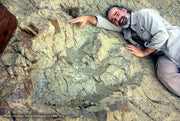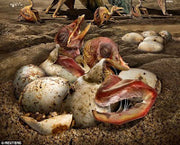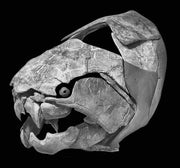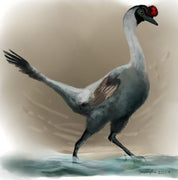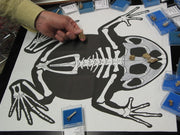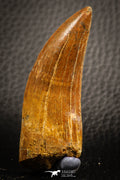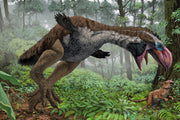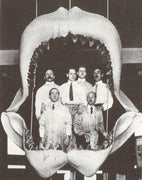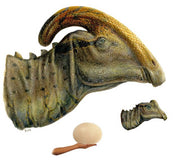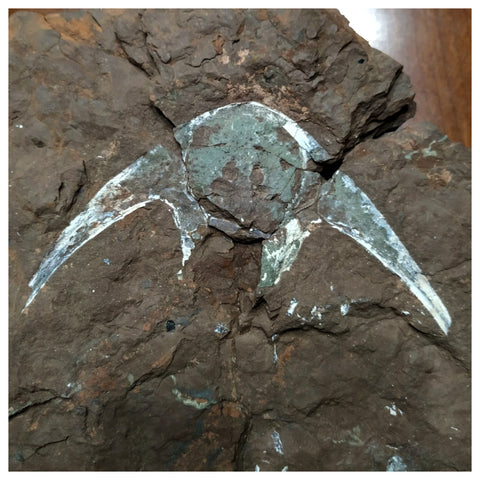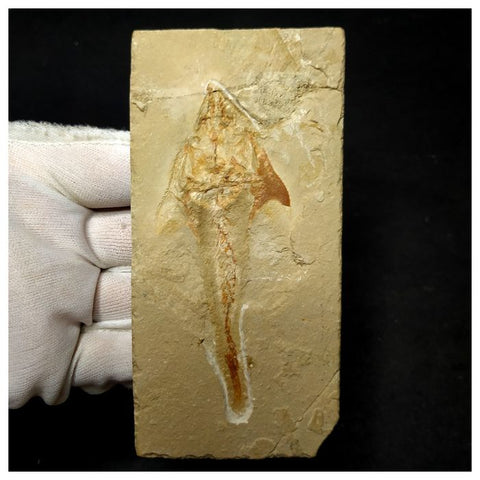The first fossils were discovered in 2007, and although they were scarce, were enough to know their surprising size. They were estimated more than 40 cm for that first found specimen. Given its dimensions, the chosen name could not be more appropriate: Beelzebufo or "Devil frog".
In 2014, the number of fossils discovered was so large that the skeleton could be reconstructed with great precision. In addition, the data obtained from the skeletons of adult individuals revealed that there was a size difference of up to 20%.
To explain this difference, the paleontologists, offer two main theories. There are those who say that it is due to a question of growth rates, due to food availability. Although the one preferred by the majority explains it alleging a sexual dimorphism. In most anurans, females are larger than males.
At this point, it would be interesting to comment on some basic facts about this peculiar amphibian. It lived during the Cretaceous period between 70 and 65 million years ago in what is now Madagascar. There is an interesting resemblance of the Beelzebufo with some frogs from South America, which suggests that Madagascar could have been connected to this continent.
In terms of its morphology, its robust and wide skull stands out, armed with powerful jaws provided with short but sharp teeth. This type of skull makes experts think that this frog was able to feed on small vertebrates, including dinosaurs.
His skeleton might resemble that of Ceratophrys cranwelli, known as the " pacman frog ".

Ceratophrys cranwelli
Certain morphological aspects such as loss of tympanic membrane indicate, by analogy with some current anurans, that Beelzebufo was an excavator. This data clarifies one of the problems posed by Madagascar during the Cretaceous, and is that its climate was differentiated by two seasons: one dry and one wet. Presumably the "devil frog" buried its body and hibernated during the dry season, leaving its shelter along with the first rains.

Beelzebufo eating a small dinosaur
Many chapters remain to be written in the book of primitive giant frogs. One of those chapters has just begun to be written in Sierra Dorotea, Chile. There, paleontologists from Chile and Canada have found a fossil that breaks Beelzebufo's record. Only part of the humerus of this extinct frog, named Calyptocephaella indet. which lived 40 million years ago, has been found.
The size of the humerus was estimated to be 12 cm, which proportionally results in a frog of approximately 55-60 cm (remember 40 cm in the case of Beelzebufo), and up to 1 meter with the legs stretched. His discovery was almost parallel to the Beelzebufo, but that small fragment of humerus was stored for 7 years, until it could be identified.

Fossil of Calyptocephaella indet.
We hope that new discoveries shed light on this new species and on possible new animals that are increasingly surprising.
Germán Z. López
This post can also be read in Spanish at our partner blog Made in Pangea.
Illustrations:
Photographs:
Sources:
- Evans, Susan E.; Jones, Marc E. H.; Krause, David W. (2008). «A giant frog with South American affinities from the Late Cretaceous of Madagascar». Proceedings of the National Academy of Sciences of the United States of America.
- National Geographic - Animals. "Devil frog Beelzebufo ampinga"












